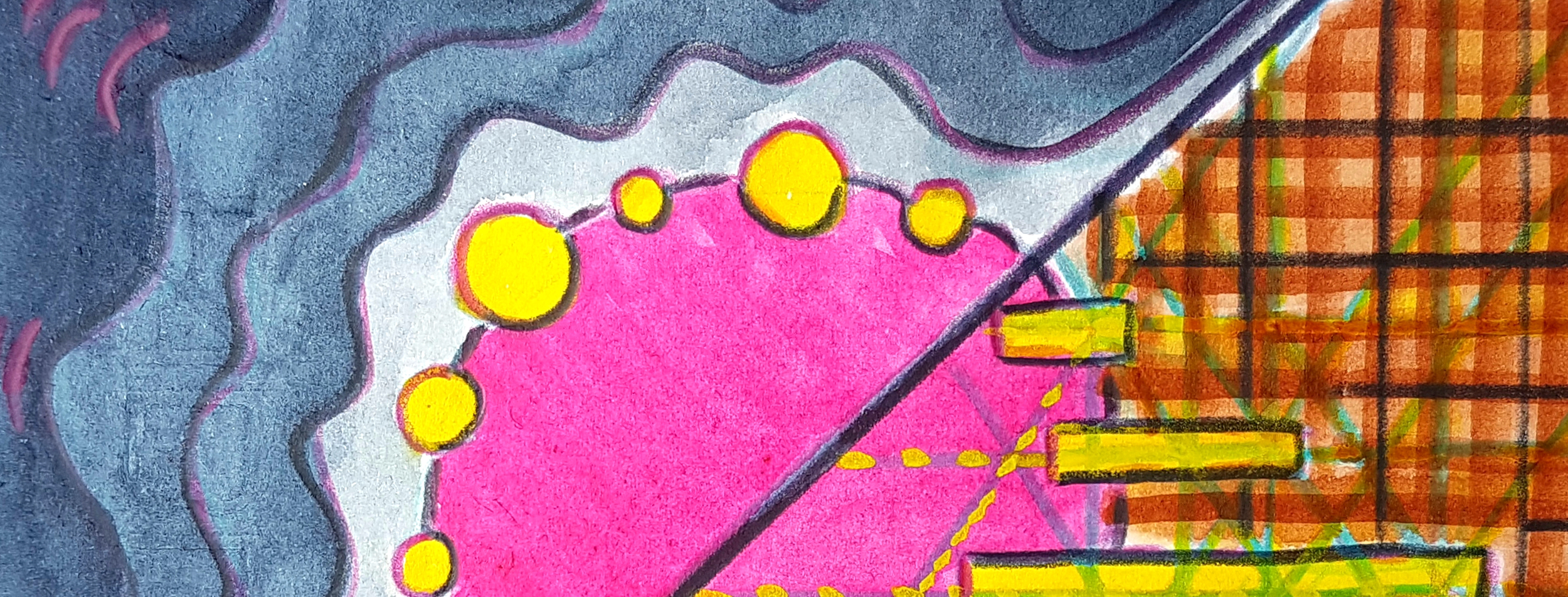Introduction
I want my comics to be accessible not only visually, but also tactile and acoustic. Therefore I need a transcription into pure text. Visual elements of the comics have to be described and the pixelated text from the comics image file is typed out. This text is machine-readable. Readers can access it with text-to-speech systems and braille display.
Wanting to make make my comics accessible beyond the visual has a lot to do with my own audience. I wrote about this in my first blog post on screenreadable comics, which includes a list of all the comics already transcribed.
The first workshop “Transcribing Screenreadable Comics” was offered to comic artists in September 2020. The workshop covered three objectives of transcribing comics. Firstly, the comic should gain accessibility for more readers. Secondly, the transcription enables text search and googleability. Thirdly, making comic transcriptions can be a tool of analyzing and getting to know ones own work.

While transcribing a comic, one has to make decisions how to transfer visual element. This leads to a better understanding of one’s own storytelling, camera work and picture language. Transcribing a finished comic is therefore also a tool to evolve as a comic artist. In a workshop context this enhanced by the interaction with other comic artists. The workshop focused on a variety of aspects. Here I want to elucidate only two: storytelling and depth of details.
Link to the completed transcripts from the workshop
The transcriptions we worked on together in the workshop were finalized by the participants. They are linked to here as soon as they go online. Not only the comics itself cover different genres and approaches, this is also mirrored in their transcripts, which reveal the individual style of the person writing it.
Messy Parent Gender Transition
comic and transcript by Joris Bas Backer, in English.
Theory of the eggplant
comic and transcript by Illi Anna Heger, in English.
Ach, so ist das?! : Thomas, Markus, Haias
comic by Martina Schradi, transcript by Verena Maser, in German.
Spiele
comic by Nadia Bader and Gabriel Andres, transcript by Nadia Bader, in German.
Pansexualität
comic and transkript by Lena Dirscherl, aka BoPoLena, in German.
Storytelling
The story line in a comic is supported by different layers. The story telling is a combination of dialogue found in speech bubbles, narrative text and visual information.
Storytelling is at the center of transcribing. It is more important than completeness or chronology. My approach consist of first transferring all text and then adding short descriptions of the visual elements. Afterwards I leave the visual comic and work with this raw transcription only. I rearrange elements to make the storytelling run smoothly. I group paragraphs covering one to two panels and two to three visual descriptions.
Many comics of more that one narrative layers, for example a fantasy world in contrast with the real world or jumps between different historical epochs. Those layers are important and have to be accounted for in the transcription.
Depth of Details
For decisions on depth of details one considers how detailed visual information is described. The comics themselves demonstrate their own depth of details depending the realism and elaboration in backgrounds and character depiction.
It is possible to just use the text elements and names of the characters. This would be comparable to theater scripts and works really well for dialogue based comics. Oftentimes it is still worthwhile to describe atmosphere and facial expressions.
The description of many separate details may result in a very tedious read. It all depends on which details are relevant for the story. Would a visual reader of the comic linger to look at each and every detail or keep on reading after absorbing the atmosphere. The number of visual details I describe depends also on the comics and its structure.
Workshop
For an online workshop it is worthwhile to work with a small group of people. One does not see the other participants most of the time, because one looks at the comics or their transcriptions in shared text files. Each participant had chosen and started to transcribe the first couple of panels of their comic beforehand. Looking at those first attempt next to each other is the basis to start the dialogue on different aspects of transcribing comics. What works for the reader, what can be improved upon. It is important to keep an eye on ones objectives. Accessibility is possible even without perfection or exact language. Every transcription is machine readable. Smooth wording, suitable tone and the right amount of depth of detail make for a more enjoyable read, but transcribing is a process through which the understanding of ones work is developing.
While transcribing my first twenty comic I realized that with experience it became easier to make decisions. My transcription style really does depend on the individual comic. Transcribing a comic is a form of translation and at the same time an art form in itself.